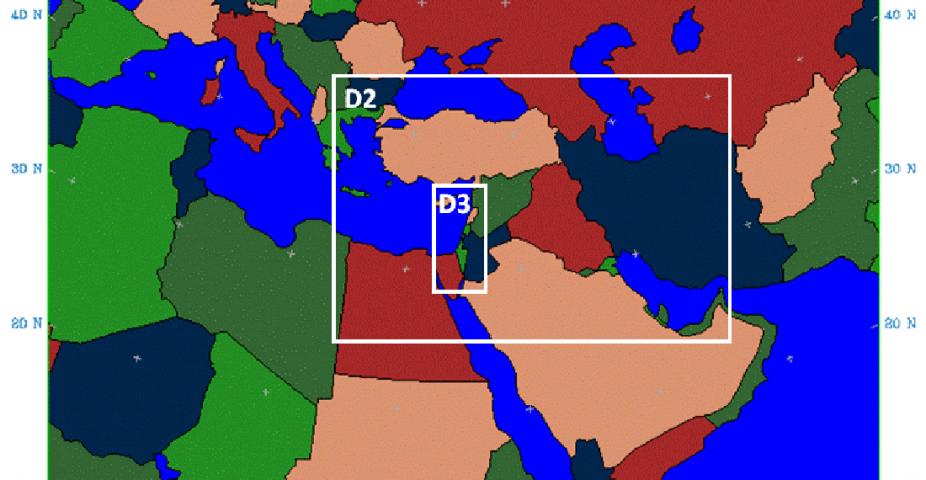Four-Dimensional Weather (4DWX) System

Objective
To improve meteorological support through the development and application of new technologies.
Description
The Four-Dimensional Weather (4DWX) System is the product of twelve years of research and development sponsored largely by the U.S. Army Test and Evaluation Command (ATEC), and is accredited for operational use at seven test ranges. Through the use of new capabilities in high-resolution mesoscale modeling, short-term thunderstorm prediction, multi-dimensional integrated displays, and fine-scale climatological analysis tools, the ranges now provide test customers with more accurate test go/no-go guidance.
In its original conception, 4DWX was targeted solely for providing advanced capabilities to the ATEC range meteorology branches, but NCAR has since adapted the system and created derivative technologies for use by other organizations:
- Analysis of potential exposure of U.S. troops to nerve agents during the first Gulf War;
- Consequence assessment for counter proliferation mission planning in Afghanistan and Iraq;
- Anti-terrorism support for the 2002 Salt Lake City Olympics, the 2004 Summer Olympics in Athens and the 2006 Winter Olympics in Torino;
- Urban-scale modeling in Washington D.C., and OKC;
- Protection of the Pentagon and surrounding regions; and
- Support for firefighters in CO and AZ during summer wildfires in 2002.
Army Test-Ranges
4DWX was originally developed to provide advanced capabilities solely to the ATEC ranges.
Case Studies
NCAR has adapted 4DWX and created derivative technologies for use by other organizations.
Demos
4DWX products stand alone or can be coupled with other specialized applications.
Sponsor
ATEC | DTC
The U.S. Army Developmental Command (DTC) is the developmental testing arm of the U.S. Army Test and Evaluation Command (ATEC) and the Army's premier organization for conducting developmental testing of weapons and equipment. With the largest, most diverse array of testing capabilities in the Department of Defense , DTC tests military hardware of every description under precise conditions across the full spectrum of arctic, tropical, desert and other natural or controlled environments on highly instrumented ranges and test courses.
Collaborator
DTRA
The Defense Threat Reduction Agency safeguards America and its friends from weapons of mass destruction (chemical, biological, radiological, nuclear and high explosives) by reducing the present threat and preparing for the future threat.
NGIC
The National Ground Intelligence Center provides scientific and technical intelligence (S& TI) and general military intelligence (GMI) on foreign ground forces in support of the warfighting commanders, force and material developers, DA, DOD, and National- level decisionmakers. The NGIC also manages the Army's Foreign Material Exploitation Program and foreign material acquisition requirements and constitutes a single authoritative source for comprehensive ground forces threat to the Army and other services
EOL
The Earth Observing Laboratory develops, provides and operates state-of-the-art, reliable atmospheric observing systems and associated support services to the university-based research community for purposes of climate and weather research worldwide. Facilities include aircraft operation and instrumentation, the deployment of radars, in-situ instruments and arrays, sondes and other electronic sensors in the field, and the development and support of data assimilation and analysis software.
CISL
Computational and Information Systems Lab's goal is to enable the best atmospheric research in the world by providing and advancing high-performance computing technologies. CISL offers computing, research data sets, data storage, networking, and data analysis tools for NCAR users.
MMM
The Mesocsale and Microscale Meteorology Division's primary focus is on understanding atmospheric phenomena on spatial scales ranging from micrometers to megameters and time scales from seconds to a few days.